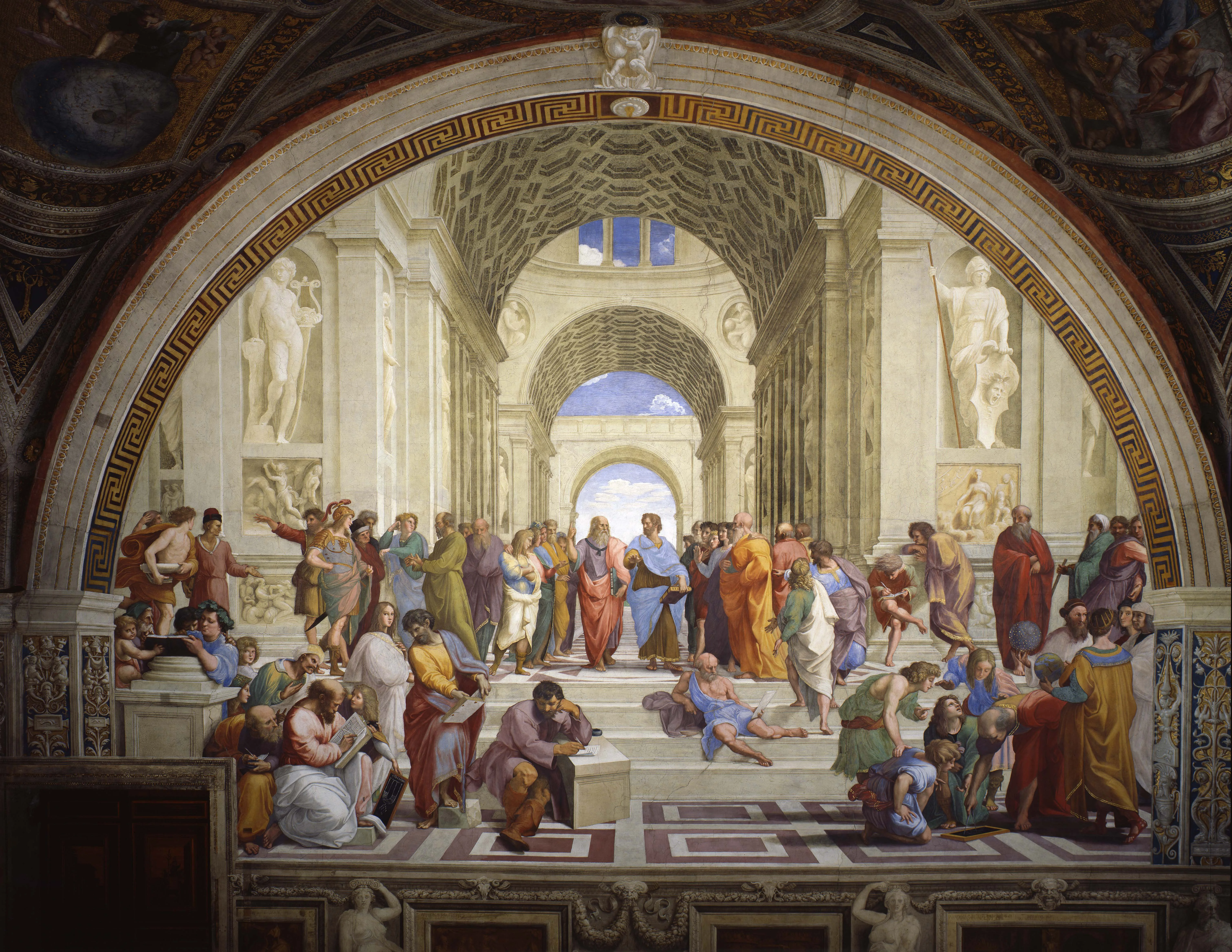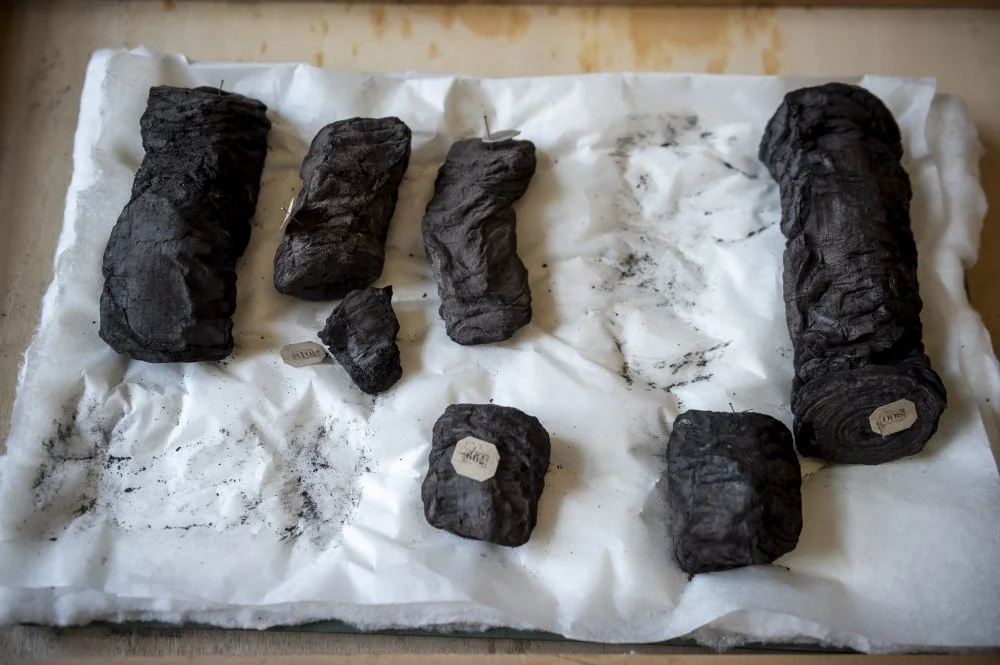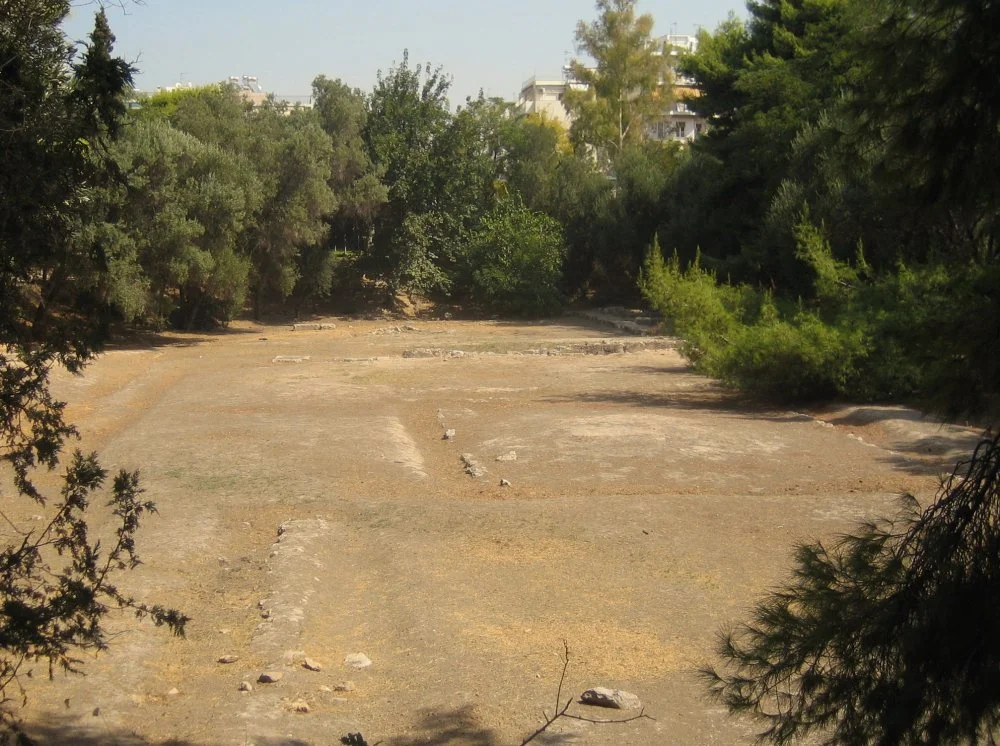
Raphael: The School of Athens The School of Athens by Raphael (1509–1510), fresco at the Apostolic Palace, Vatican City 1509-1510/Wikimedia Commons
In a previous article, we outlined the remarkable breakthrough in deciphering the burnt scrolls of Herculaneum. The collection of its manuscripts, sealed in the volcanic ash of Vesuvius during the eruption that destroyed Pompeii and Herculaneum in 79 CE, consists of over 1,500 scrolls that have gradually begun revealing their charred secrets.
One of these scorched scrolls, which scientists were permitted to examine, turned out to be a work by the philosopher Philodemus of Gadara.i
The Athenian Academy, named after Plato, has long been excavated, studied, and transformed into a museum. Of what is believed to be the Temple of the Muses, the Musaeum, only the visible foundation remains.

Scrolls from Herculaneum/Getty images
It is unreasonable to expect that archeologists will be able to complete the daunting task of unearthing the remains of the great philosopher, even within such a small search radius—after so many millennia, it's possible that nothing at all has survived. However, there are already intriguing suggestions regarding the potential construction of a commemorative tomb, a cenotaph,i
In addition, Philodemus's account challenges our previously accepted understanding of Plato's life. He mentions that Plato was enslaved during 404–399 BCE, a period that contradicts the widely held belief that the philosopher was enslaved in 387 BCE after angering the tyrant Dionysius of Syracuse. If Philodemus's dates are correct, then the allegations against the ruler—that he captured his guest and sent the philosopher to labor as a slave in the quarries—must be dismissed. At that time, Plato had not yet visited Syracuse and could only have been enslaved as a prisoner during the wars between Athens and Sparta.
This new information could potentially reshape our understanding of Plato's life and the historical context in which he lived. It may give us deeper insights into his motivations and influences and gain us a richer understanding of an intellectual giant who continues to shape our world.

Plato's Academy Archaeological Site in Akadimia Platonos subdivision of Athens, Greece 2008/Tomisti/Wikimedia Commons